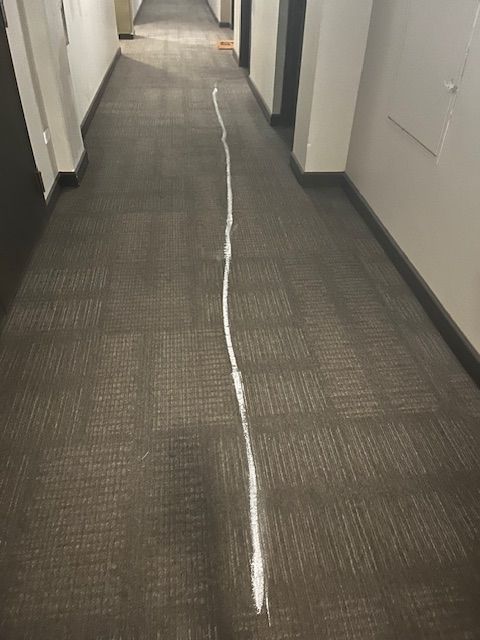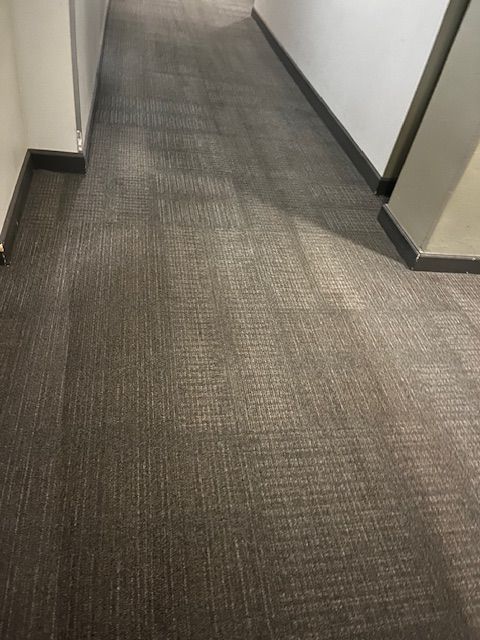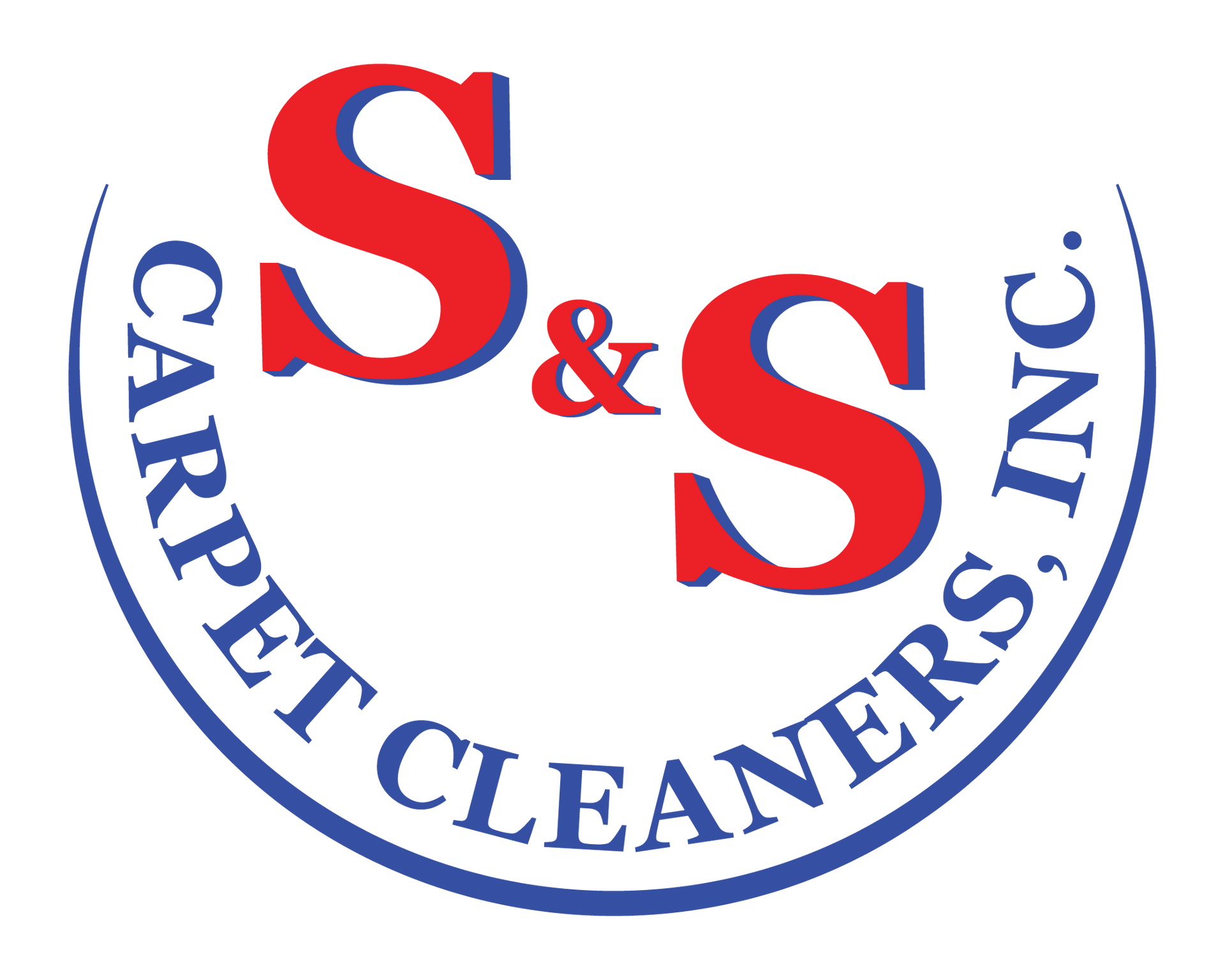Superior Spot Identification Services
Top-Notch Spot Removal Options
The procedure that worked great to remove one stain can set another stain. Knowing what you are trying to remove will make your spot removal endeavors easier and faster. This Technical Resource Guide will present some ideas on identifying those mystery spots and advice on how to proceed if the stain cannot be identified.
ASK – The homeowner, family members or in the case of commercial cleaning the people who work nearby may be helpful in identifying what was spilled.
Be a Detective – The location of a stain may be a clue. Is it near the laundry room? Perhaps this is color loss from bleach. Black stains near the door from the garage or driveway could be tracked in oil or grease. Drips around the table or likely food or beverage spills.
Use Your Senses– The color or odor of a stain may provide further clues about the cause. A slick feel may indicate oil or grease. A sticky feel could come from the sugar in a soft drink spill. There is one limitation on using your senses. Don’t try to identify a mystery spot with your sense of taste.
Should I pre-spot or post-spot? Many stains will come out with normal cleaning or just a little extra pre-spray worked in with the bottom of your shoe. There is no need to take the time to treat each of these spots individually. However, there will be a few stains that are best treated before heat or moisture are applied. Pre-spot is best for food dye stains like Kool-Aid ™, inks, and furniture stains.
Pretreatment is also recommended for color loss situations. With experience, you will learn more about which stains respond best to pre-spotting. Many stains can remain untreated until after cleaning. This will reduce the number of stains that need special treatment. If you have identified the spot or at least the general category of the spot, select the appropriate stain removal product and go to work.
Yellowing (Browning)
Yellowing can describe a number of conditions. Fortunately, most of these conditions can be corrected by the same process. The yellow color is normally only on the tips of carpet tufts or the surface of an upholstery fabric. The intensity may range from a pale yellow to a dark brownish yellow. Most often the yellowing is light and is noticed on light colored fibers.
CAUSE
Yellowing can be caused by one or more of the following:
- Off-gassing from BHT (Butylated Hydroxytoluene). BHT may be found in some carpet cushion, construction adhesives used in particle board, OSB and plywood and many other sources.
- Alkalinity on natural fibers. Alkalinity also effects some older acid dye resistor treatments.
- Over-Wetting and/or slow drying
- Age, especially when acid dye resistors and stain repellents are present
PREVENTION
Much yellowing is from causes beyond the cleaner’s control. However, controlling moisture and avoiding chemicals with elevated pH for the fiber being cleaned will reduce yellowing or avoid it altogether.
Blood
Regardless of the quantity, spills of human blood are potential health hazards. Hepatitis type B and HIV and other pathogens may be present. It is important to follow the procedures outlined in the blood-borne pathogens standard. Personal protective equipment (PPE) may include gloves and goggles. NOTE: The following procedures apply to relatively small quantities of blood. Trauma scene clean-up requires additional precautions. The carpet and/or the cushion may need to be replaced.
Coffee / Tea
The commonly encountered coffee spill can present challenges to the cleaner due to the complex nature of the ingredients. In addition to the natural color from the coffee bean, that mug may have artificial color, oil from cream and sugar. The process of decaffeination removes some color. This is replaced by black dye. Some freeze-dried coffees may also have added color. Food dyes, oil, sugar and coffee may all need to be dealt with separately. Tea is treated the same as coffee. Sugar may be added to tea, but added cream or food coloring is rare.
Fruit Juices
The category of fruit and vegetable juices ranges from sugary apple juice which will leave a sticky, soil attracting residue to the natural dyes in tomato juice to the artificial colors used in juice products. So, there will be considerable variation in how these spills respond to cleaning. In any situation, the sooner you get to the spill the better your results will be.
Paint
Paint removal may be one of your greatest spotting challenges. Dried oil based paints may require a bonded insert. Paint is designed to form thin films as it dries. Large paint spills will form many layers each of which must be attacked by the spotting products. Even though spotters might eventually remove all the layers, this may not be a practical solution. Although latex paints can be cleaned with water when fresh, once they cure the latex is no longer water soluble. If water could remove latex paint, we would need to repaint our homes every time it rained.


Wine
Wine comes in many varieties, made from different types of grapes or other fruits. The type of wine, the age of the stain and the effects of previous cleaning attempts will all affect the results you can expect.
Grease/Oils
This process can be used for petroleum greases, petroleum jelly (Vaseline) and other lubricants as well as cooking grease. Although this process can be used on wool and all common synthetic face fibers, remember that olefin (and to a lesser extent polyester) have an affinity for oil and grease. With time, oil and grease will dry out and oxidize. Oils will form chemical bonds with oleophilic molecules in olefin. This can be difficult or impossible to remove. For this reason, olefin and polyester carpets should be cleaned more frequently if they are exposed to tracked in oil and grease or oily atmospheric pollution.
Olefin Carpet
Olefin is a synthetic, non-porous, solution dyed fiber that is made from petroleum products. This gives it some interesting characteristics.
POSITIVE
- Colorfast–Solution dyeing the fiber makes it completely colorfast.
- Stain Resistant–Olefin is almost completely non-absorbent making it virtually impossible to stain with water-based soils.
NEGATIVE
- Attracts Oily Soils–Petroleum products are used to make olefin; therefore, oily soils are attracted to olefin and can be difficult to remove.
- Wicks Soil–Water and soil cannot penetrate the olefin fiber. This forces water and soil to wick to the top during the last stages of drying and leaving the soil deposited on the top fibers. This creates a blotchy appearance.
- Crushing of Fibers–Olefin has poor resilience (the ability of fibers to stand erect) and is affected by heavy traffic. This is not restorable.
Mustard
Mustard is difficult to remove because it is a “Disperse Dye.” Disperse dye particles are held to the surface of the fiber by friction and strong electrical forces. This means that if you encounter a mustard spot, do not guarantee you will be able to completely remove the stain. There may be times when 100% success may not be reached without damaging the fiber.
Syrup
The common element in spills of pancake syrup, honey, jam, jelly and similar sticky substances is lots of sugar to be removed. If you apply too much heat to sugar, you get caramel which is even harder to remove. Using hot water is fine, but keep temperatures below 180*F.
Candle Wax
The following procedures will work for melted wax from candles, crayons, and paraffin. Time-consuming process.
PROCEDURE
- Remove as much excess wax as you can with a bone scraper and vacuum thoroughly.
- Place absorbent paper (paper grocery bags work great – just don’t use the side of the bag that has the store logo on it) over the wax. Terry Cloth is also effective.
- Place an iron on top of the paper and melt the wax into the paper. Never put the iron above the wool setting, as this will damage fibers.
- As the wax melts into the paper, slowly move the paper to a clean spot.
- Repeat steps 1-5 until no more wax is absorbed into the paper.
- Apply Solvent Clean to the spot and dry vacuum.
- If a little color or residue is left, apply Avenge Spotter.
- Rinse and extract.
- Neutralize with Fab-Set.
- Dry quickly.
For more information on our spot identification services, call us today at
847-581-1900
We offer FREE estimates
over the phone!


